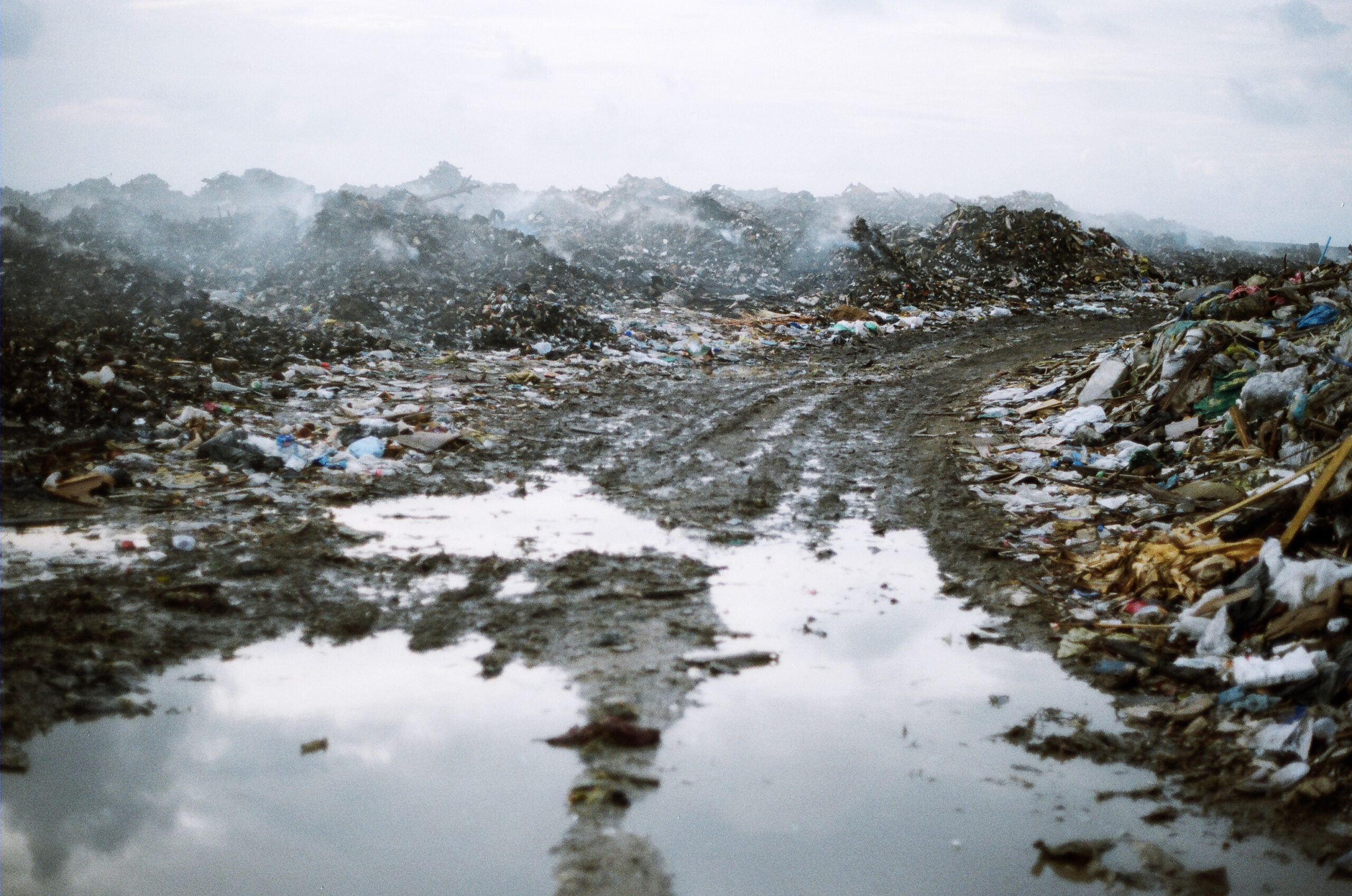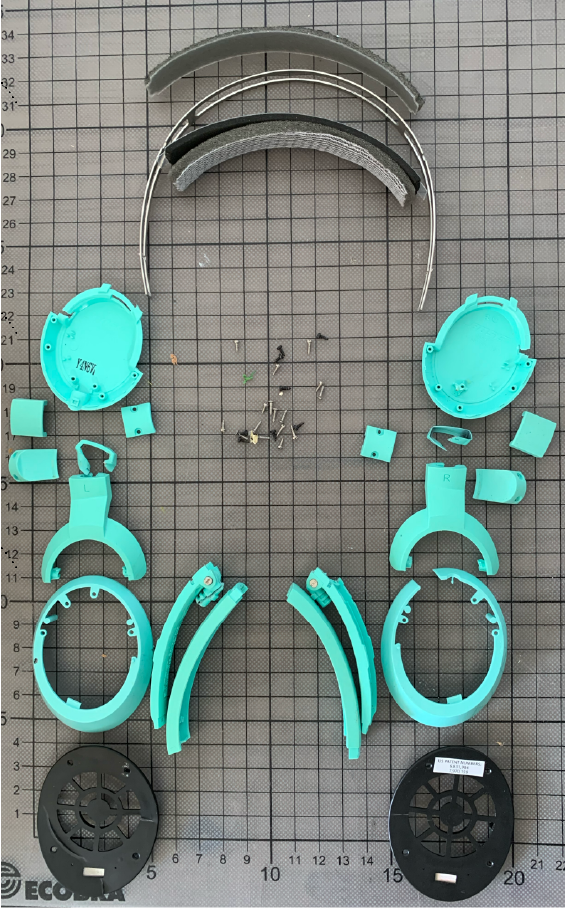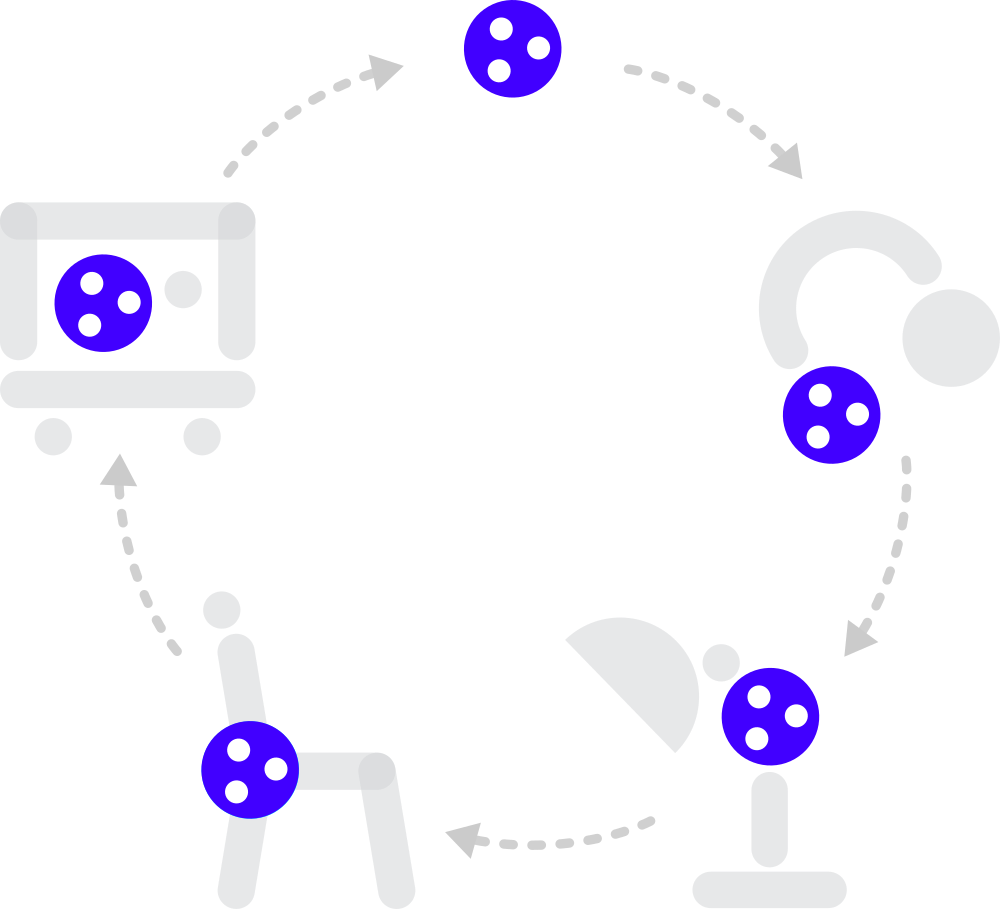Make
a
difference
as designer, customer and business.
Together we can change the world of products.

Our world is drowning in garbage
We pollute the earth when we extract resources for our products.
And we pollute it again when we dispose of those products.
So let’s keep things in the
loop
for longer, together
We invite:
Customers
to buy sustainable products made from open multipurpose parts that support creative remixing.
Designers
to collaboratively invent sustainable products made from open multipurpose parts and add remix ideas for existing solutions.
How?

Why do products become waste?
Most products today are made from parts that are
- hard to produce,
- difficult to separate,
- single-purpose,
- closed source,
making these products hard to loop. It’s difficult to repair, upgrade, repurpose (remix) and recycle them.


Circular design fosters creative collaboration.
We want to collaboratively redesign everything to be made from parts that are
- easy to produce,
- quick to separate,
- multipurpose,
- open source
in order to enable circular practices such as repair, reuse, repurpose, upgrade & recycling.


Let’s create change together.
Join us as
Designer
Help us to expand Ikego’s catalog of multipurpose parts and models and build yourself a business around it. Learn more
Customer
Search our catalog and buy sustainable Ikego products off the shelf or engage local craftsmen for a local make.
Let’s accelerate a distributed circular design revolution
together

Work together?
.Ok. But who are you?
Meet the people behind the project
Hi, we are Max & Lars, we met in Berlin Germany and share this vision for our circular design future and decided to try and kickstart it.


We believe there are more designers and manufacturers out there who want to work in a sustainable, community and collaborative way. If we can find each other, we can make a difference. Let’s build it together. We are looking for co-builders. Reach out.
.
“Trash means something doesn’t have enough information to tell you how to reuse it. There is no trash in a LEGO room (...)”
Neil Gershenfeld (MIT, Center for bits and atoms), source
↑
Ikego parts are multipurpose like LEGO bricks and this page shares information how to make and creatively reuse them.
+
Read more: How Ikego supports circular practices
Image Credits
garbage image by “Dying Regime”, CC-BY 2.0 Generic

